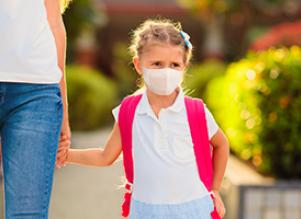8/24/2020
Hybrid Education Plans Take Shape in the US
Although school has resumed in countries such as Norway and China, restarting K-12 education during a global pandemic is proving difficult in the United States. Amid questions about if, how, and when to do so, a host of ideas have emerged. les of not reopening school buildings at all and "going back to normal" lies the hybrid approach. This model, which seeks to blend online and in-person learning, appears to be gaining traction as district leaders, teachers, and parents scramble for a workable solution.
Here's a quick look at some of them:
-
At the beginning of July, Florida’s top education official, Richard Corcoran, ordered school buildings to reopen in August and hold in-person classes five days a week, even as coronavirus cases continued to climb in the state. Corcoran’s order reflects a growing push from Secretary of Education Betsy DeVos and other federal officials to get brick-and-mortar schools up and running as quickly as possible.
-
Although officials in California's Orange County recently announced a plan to reopen schools without insisting that students and staff wear masks or follow physical distancing guidelines, two of the Golden State's largest districts made a very different decision. More specifically, the Los Angeles and San Diego school districts will begin the new academic year with online instruction only.
-
Some schools in Phoenix and Milwaukee also plan to offer online instruction only, in part to give health experts more time to address the virus and to avoid overwhelming area hospitals.
Limited reopening
Between the two poles of not reopening school buildings at all and "going back to normal" lies the hybrid approach. This model, which seeks to blend online and in-person learning, appears to be gaining traction as district leaders, teachers, and parents scramble for a workable solution.
Notably, New York City Mayor Bill de Blasio announced in July that the city’s public-school students would not be going back to school full-time this fall. According to The New York Times, the decision regarding the nation's largest school district came after “intense debate among elected officials, educators, and public health experts” and impacts more than 1 million students and around 135,000 employees.
Details of the plan released thus far include the following:
-
Classes will be much smaller than the typical 30-student standard, with just a dozen people in the room at a time—including teachers and support staff.
-
Students will attend school one to three days per week, using a staggered schedule selected by principals.
-
Families may choose full-time virtual learning for their children, while students who attend school on-site will complete online assignments at home.
Best of both worlds
In areas where political leaders are still weighing their options, some educators are pushing forward with plans to embrace blended learning.
As Education Dive's Naaz Modan pointed out, the move toward partial or full online learning has been building for some time, with recent trends in educational technology bringing software, apps, and distance learning to many schools. However, the COVID-19 crisis illuminated the fact that not all students and staff have access to such tools, and those who do may not know how to make full use of them.
For educators who may be tasked with adopting a hybrid learning model sooner rather than later, Modan offered the following practical tips:
-
Implementation is key: Online learning should not take the form of an in-person classroom approach conducted over the computer. Rather, lesson plans should be created with an online framework in mind.
-
Tailor activities to different settings: High-school teachers with experience applying the hybrid model told Modan that they use class time for students’ “passion projects” and assign standards-based work online.
-
Supplement online work with in-person support: Combining remote lessons with in-class support can be a boon to students who need help meeting state standards. Establishing structure in the form of weekly to-do lists and regular communication with families may also be beneficial in this regard.
Optimal preparedness
Government officials in Connecticut recently agreed to shorten the school year in order to accommodate additional three days of teacher prep time, which may include reworking classroom space to allow for physical distancing or participating in training sessions devoted to best practices for blended learning.
The principal of an elementary school in the New York City system took a similarly practical approach; rather than waiting for official word on what the coming year might look like, Principal Eve Litwack of P.S. 107 sent parents a letter in June to outline changes they should expect in the fall, including varied scheduling to account for the fact that only a third of the school’s population will be allowed on-site at any given time.
The bottom line
As the COVID-19 pandemic persists, so too do many of the uncertainties surrounding it. However, hybrid education models are likely to be around for a while.


